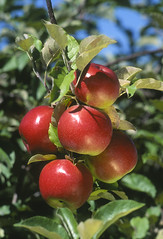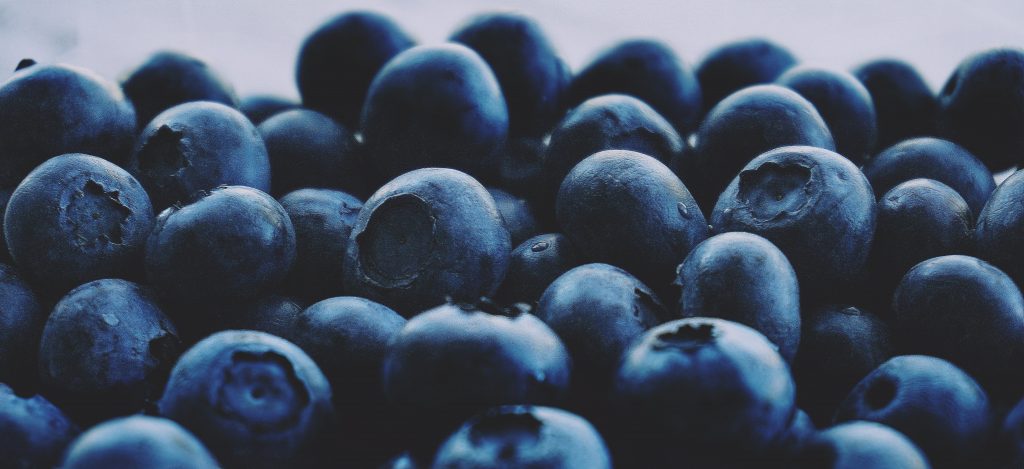Rainfastness characteristics of insecticides
Precipitation can impact the performance of insecticides, but some compounds resist wash-off. There are several critical factors that influence impact of precipitation on a pesticide’s performance.

The first factor is the plant-penetrative attributes of the various compounds. Some pesticide chemistries, like organophosphates, have limited penetrative potential in plant tissue, and thus are considered primarily as surface materials. Some compounds, such as carbamates, oxadiazines and pyrethroids penetrate plant cuticles, providing some resistance to wash-off. Many newer compounds, such as spinosyns, diamides, avermectins, and some Insect Growth Regulators (IGR) readily penetrate plant cuticles and have translaminar movement in leaf tissue. Others, like the neonicotinoid insecticides, are systemic and can have translaminar (moves from top surface to bottom of leaf) as well as acropetal movement in the plant’s vascular system (moves from center to growing tips of leaves). Penetration into plant tissue is generally expected to enhance rainfastness of pesticides.
The second factor is the inherent toxicity of an insecticide to the target pest and the persistence of the compound in the environment. In some cases a compound may be susceptible to wash-off, but its environmental persistence and inherent toxicity to the target pest compensates for the loss of residue, thus delaying the need for immediate re-application.
The third factor is the amount of precipitation. In general, organophosphate insecticides have the highest susceptibility to wash-off from precipitation, but their high field-rate toxicity to most target pests overcomes the necessity for an immediate re-application. Neonicotinoid insecticides are moderately susceptible to wash-off, with residues that have moved systemically into plant tissue being highly rainfast, and surface residues less so. Carbamate, IGR and oxadiazine insecticides are moderately susceptible to wash-off and vary widely in their toxicity to the range of relevant fruit pests. Diamide, spinosyn, avermectin, and pyrethroid insecticides have proven to be moderate to highly rainfast on most fruit crops.
For most insecticides, a drying time of 2 – 6 hours is sufficient to “set” the compound in/on the plant. With neonicotinoids, for which plant penetration is important, drying time can significantly influence rainfastness. For neonicotinoids up to 24 hours is needed for optimal plant penetration, thus the time proximity of precipitation after application should be considered carefully. Spray adjuvants, materials intended to aid the retention, penetration or spread on the plant, can also improve the performance of insecticides.
Based on the results from the current studies the following charts have been developed to serve as a guide for general rainfastness characteristics and re-application recommendations for certain insect pests (also printed in the 2015 Michigan Fruit Management Guide E-154). Note that these recommendations should not supersede insecticide label restrictions or farm-level knowledge based on site-specific pest scouting, but rather are meant to compliment a comprehensive pest management decision-making process.
Rainfastness Rating Chart
General Characteristics for Insecticide Chemical Classes
| Insecticide Class | Rainfast ≤ 0.5 inch: Fruit | Rainfast ≤ 0.5 inch: Leaves | Rainfast ≤ 1.0 inch: Fruit | Rainfast ≤ 1.0 inch: Leaves | Rainfast ≤ 2.0 inch: Fruit | Rainfast ≤ 2.0 inch: Leaves |
| Organophosphates | L | M | L | M | L | L |
| Pyrethroids | M/H | M/H | M | M | L | L |
| Carbamates | M | M/H | M | M | L | L |
| IGRs | M | M/H | M | M | L | L |
| Oxadiazines | M | M/H | M | M | L | L |
| Neonicotinoids | M,S | H,S | L,S | L,S | L,S | L,S |
| Spinosyns | H | H | H | M | M | L |
| Diamides | H | H | H | M | M | L |
| Avermectins | M,S | H,S | L,S | M,S | L | L |
* H – highly rainfast (≤30% residue wash-off), M – moderately rainfast (≤50% residue wash-off), L – low rainfast (≤70% residue wash-off), S-systemic residues remain within plant tissue
Apple Insecticide Precipitation Wash-off Re-application Decision Chart
Expected codling moth control in apples, based on each compound’s inherent toxicity to CM larvae, maximum residual, and wash-off potential from rainfall. (RF)=Rainfall
| Insecticides | (RF) 0.5 inch/*1 day | (RF) 0.5 inch/*7 days | (RF) 1.0 inch /*1 day | (RF) 1.0 inch /*7 days | (RF) 2.0 inches/*1 day | (RF) 2.0 inches/*7 days |
| Imidan | X | X | X | X | ||
| Asana | X | X | X | X | X | |
| Calypso | X | X | X | X | ||
| Assail | X | X | X | X | ||
| Proclaim | X | X | X | X | ||
| Rimon | X | X | X | X | ||
| Delegate | X | X | ||||
| Altacor | X | X |
- * Number of days after insecticide application that the precipitation event occurred.
- X – Insufficient insecticide residue remains to provide significant activity on the target pest, and thus re-application is recommended.
- An un-marked cell suggests that there is sufficient insecticide residue remaining to provide significant activity on the target pest, although residual activity may be reduced.
Grape Insecticide Precipitation Wash-off Re-application Decision Chart
Expected Japanese beetle control in juice grapes, based on each compound’s inherent toxicity to JB adults, maximum residual, and wash-off potential from rainfall. (RF)=Rainfall
| Insecticides | (RF) 0.5 inch/*1 day | (RF) 0.5 inch/*7 days | (RF) 1.0 inch /*1 day | (RF) 1.0 inch /*7 days | (RF) 2.0 inches/*1 day | (RF)2.0 inches/*7 days |
| Imidan | X | X | X | X | X | |
| Sevin | X | X | X | X | ||
| Brigade | X | X | X | X | ||
| Actara | X | X | X | X | ||
| Avaunt | X | X | X | X |
- * Number of days after insecticide application that the precipitation event occurred.
- X – Insufficient insecticide residue remains to provide significant activity on the target pest, and thus re-application is recommended.
- An un-marked cell suggests that there is sufficient insecticide residue remaining to provide significant activity on the target pest, although residual activity may be reduced.
Blueberry Insecticide Precipitation Wash-off Re-application Decision Chart
Expected cranberry fruitworm control in blueberries, based on each compound’s inherent toxicity to CBFW larvae, maximum residual, and wash-off potential from rainfall. (RF)=Rainfall
| Insecticides | (RF) 0.5 inch/*1 day | (RF) 0.5 inch/*7 days | (RF) 1.0 inch /*1 day | (RF)1.0 inch /*7 days | (RF) 2.0 inches/*1 day | (RF)2.0 inches/*7 days |
| Asana | X | X | X | X | X | |
| Intrepid | X | X | X | X | X | |
| Assail | X | X | X | X | ||
| Delegate | X | X | X | X |
- * Number of days after insecticide application that the precipitation event occurred.
- X – Insufficient insecticide residue remains to provide significant activity on the target pest, and thus re-application is recommended.
- An un-marked cell suggests that there is sufficient insecticide residue remaining to provide significant activity on the target pest, although residual activity may be reduced.
Blueberry Insecticide Precipitation Wash-off Re-application Decision Chart
Expected Japanese beetle control in blueberries, based on each compound’s inherent toxicity to JB adults, maximum residual, and wash-off potential from rainfall. (RF)=Rainfall
| Insecticides | (RF) 0.5 inch/*1 day | (RF) 0.5 inch/*7 days | (RF) 1.0 inch /*1 day | (RF)1.0 inch /*7 days | (RF) 2.0 inches/*1 day | (RF)2.0 inches/*7 days |
| Imidan | X | X | X | X | X | X |
| Mustang Maxx | X | X | X | X | ||
| Sevin | X | X | X | X | X | |
| Provado | X | X | X | X | X |
- * Number of days after insecticide application that the precipitation event occurred.
- X – Insufficient insecticide residue remains to provide significant activity on the target pest, and thus re-application is recommended.
- An un-marked cell suggests that there is sufficient insecticide residue remaining to provide significant activity on the target pest, although residual activity may be reduced.
Blueberry Insecticide Precipitation Wash-off Re-application Decision Chart
Expected spotted wing Drosophila control in blueberries, based on each compound’s inherent toxicity to SWD, maximum residual, and wash-off potential from rainfall. (RF)=Rainfall
| Insecticides | (RF) 0.5 inch/*1 day | (RF) 0.5 inch/*7 days | (RF) 1.0 inch /*1 day | (RF)1.0 inch /*7 days | (RF) 2.0 inches/*1 day | (RF) 2.0 inches/*7 days |
| Imidan | X | X | X | X | ||
| Mustang Maxx | X | X | X | X | ||
| Lannate | X | X | X | X | ||
| Malathion | X | X | X | X | X | X |
| Delegate | X | X | X | X | X | X |
| Assail | X | X | X | X | X | X |
- * Number of days after insecticide application that the precipitation event occurred.
- X – Insufficient insecticide residue remains to provide significant activity on the target pest, and thus an immediate re-application is recommended.
- An un-marked cell suggests that there is sufficient insecticide residue remaining to provide significant activity on the target pest, although residual activity may be reduced.
Table 1. Insecticide persistence, plant penetration, and rainfastness rating.
| Compound Class | Persistence (residual on plant) | Plant Penetration Characteristics | Rainfast Rating |
| Organophosphates | Medium – Long | Surface | Low |
| Carbamates | Short | Cuticle Penetration | Moderate |
| Pyrethroids | Short | Cuticle Penetration | Moderate – High |
| Neonicotinoids | Medium | Translaminar & Acropetal | Moderate |
| Oxadiazines | Medium | Cuticle Penetration | Moderate |
| Avermectins | Medium | Translaminar | Moderate |
| IGRs | Medium – Long | Translaminar | Moderate |
| Spinosyns | Short – Medium | Translaminar | Moderate – High |
| Diamides | Medium – Long | Translaminar | Moderate – High |
This article reprinted with permission from author.


